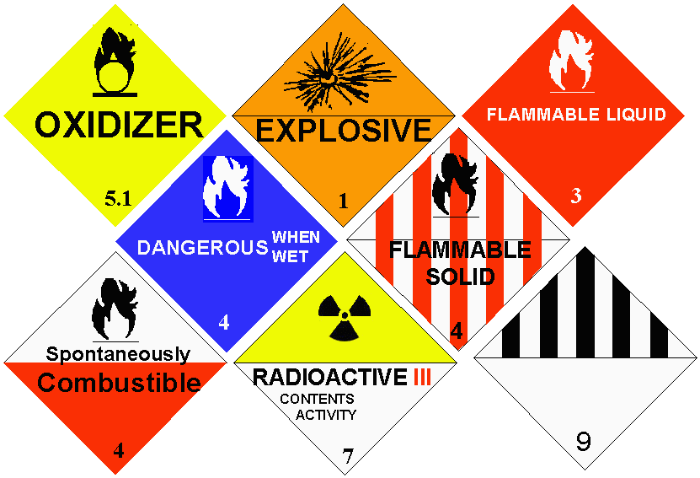3 Things to Know about Shipping Dangerous Goods Overseas
Many of today’s global industries require the shipment of hazardous materials overseas. Shipping dangerous goods is more complicated than shipping non-hazardous materials. Dangerous goods require specific documentation and special packaging materials and methods depending on the potential hazards they present. That’s why it’s important to partner with a company like Total Export that specializes in packaging, , and exporting dangerous goods, and partners with companies to ship your products safely anywhere in the world.
- Dangerous goods are classified into nine categories.
The United Nations Committee of Experts classifies dangerous goods into nine categories from most to least hazardous. The committee also make recommendations on how to ship these goods internationally.
The most hazardous materials are explosives (class 1), gasses (class 2), flammable liquids (class 3), and flammable solids (class 4). Classes 5 through 9 are, respectively, oxidizing substances and organic peroxides, toxic and infectious substances, radioactive material, corrosives, and miscellaneous dangerous goods.
- Shipping dangerous goods requires specific documentation.
Shipping dangerous goods requires more than a “caution” sticker and a secure container. Depending on its class, your shipment will need to include a dangerous goods declaration, documentation of special permissions or exceptions relevant to your goods, authority approvals, safety checklists, and other labeling and packaging requirements. Total Export is an expert in labeling and shipping requirements for all classes of dangerous goods so you know your shipment will make it to its destination safely and on time.
- Dangerous goods have extraordinary shipping requirements.
Special considerations for dangerous goods goes beyond documentation. Every hazardous material requires specific packaging to prevent accidents during shipment. Your dangerous goods must be stored, loaded, and then stowed in a way that minimizes the chance they will cause an incident. Everyone in your transportation chain—from the team designing your packaging to the crew unloading your goods at port—must be trained to handle hazardous materials.
Some examples of special shipping requirements include separating materials that may cause damage when exposed to each other and properly protecting materials that become hazardous when wet. Your shipment should include a list of potential hazards and how crews can mitigate or reduce damage in the event of an incident.
Shipping dangerous goods requires expertise and experience. Work with Total Export to get the knowledgeable advice you need to ship your hazardous materials safely and on time. Contact us today at 612-788-9777.
 Industrial Export Packaging and Custom Crating
Industrial Export Packaging and Custom Crating

 612 788 9777
612 788 9777 

One Comment on “3 Things to Know about Shipping Dangerous Goods Overseas”
I found it interesting what you said about how dangerous goods need more than just the regular documentation. They need special considerations and specific packaging to prevent accidents. Personally, I believe having these precautions is really important when shipping a product worldwide. If I were to ship a hazardous product, I’ll definitely be sure to follow all the regulations and the specifications for the handling of it. You did a great job explaining how dangerous goods have extraordinary shipping requirements.